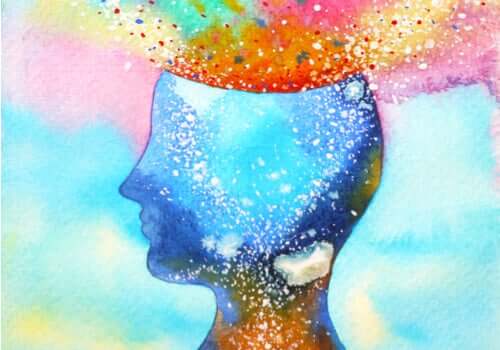Psychoanalysis has always been linked to art. Therefore, we can talk about psychoanalysis and art as two closely related disciplines.
Sigmund Freud was the creator of psychoanalysis, philosophy, therapeutic practice and research, which focuses on the study and intervention of humans, especially in relation to unconscious aspects. Freud, in his studies, mentioned art several times, and saw it as an “anxiety mobilizer. “
- Certainly.
- The link between the unconscious and the art is widely recognized.
- In this article we will go further.
- Let’s talk about the relationship between these two disciplines.
“The role of art in society is to build; Are we rebuilding when we’re in danger of collapse?Sigmund Freud?
Freud had a very close relationship with art. He spent hours in museums analyzing the works, so he enjoyed and was attracted to many expressions considered art, and even collected sculptural pieces, in addition, in some of his letters, he confessed his admiration for certain authors, such as Cervantes.
From his admiration for literary and mythological works were born some of the analyses he would later publish in his books, such as: The Complex of Oedipus, The Poet and Fantasy, Dostoyevsky and Parricide, and A Childhood Memory of Leonardo da Vinci, among others. .
Freud left us an important legacy: proof of the link between psychoanalysis and art, let’s look at his contributions:
Freud immersed himself so much in art that he conditioned much of his reflection, defined the artist as the person who finds his way back to reality, as someone who has the incredible power to model a material into a faithful copy of representation. of his fantasy.
He saw the artist as a person capable of turning his instincts into realities through art and, moreover, he was able to transform those impulses into something aesthetic, that is, socially acceptable.
On the other hand, Freud suggested that the artist and psychoanalyst were closely related, because they both work on the same object. The only difference is that they use different methods; the psychoanalyst through analysis and the artist through his work.
In his immersion in art studies, Freud shaped the concept of sublimation, a defense mechanism that would allow the exchange of sexual purpose for a higher and more social value, that is, art would be a way of following our impulses through a vehicle that society accepts, so future authors of psychoanalysis have continued to focus on this type of transformation of our unconscious impulses and mechanisms.
In fact, many psychoanalysts have begun to establish that art is a type of vehicle because it facilitates mobilization; in this case the mobilization of anxieties, is a way of transforming suffering.
It was later established that art is a way of organizing emptiness, emptiness would be the impulses we have and art is a way of containing them, then we would turn anxieties, impulses and other unconscious mechanisms into art.
In this way we turn what we carry in us into something more acceptable, both for ourselves and for others, we mobilize what we feel and turn it into art.
Psychoanalysis suggests that when a person has a mental disorder, art can be helpful, in fact, establishing the first links to what they feel inside, beginning to better understand what’s wrong with them.
On the other hand, the creative manifestation is seen by psychoanalysis as a form of relief, as an effective drug for cleaning wounds, a therapeutic supplement invaluable by the absence of restrictions.
Currently there are several psychoanalysts who use art as a therapeutic medium during their consultations, as is the case of Bayro Corrochano, who in an article for the Journal of Psychology CES tells the story of a child who used clay to create during his analysis. gradually he established ties to reality through analysis and his own works.
Several psychoanalysts have approached art. Let’s look at some of them:
Psychoanalysis and art are two very related disciplines, both of which have to do with humans and can show their deepest aspects, so thanks to this link this path continued to be explored as an alternative to helping people from psychology. understand and integrate suffering into personal history.
“There is a way back from fantasy to reality, is this way art?Freud?

